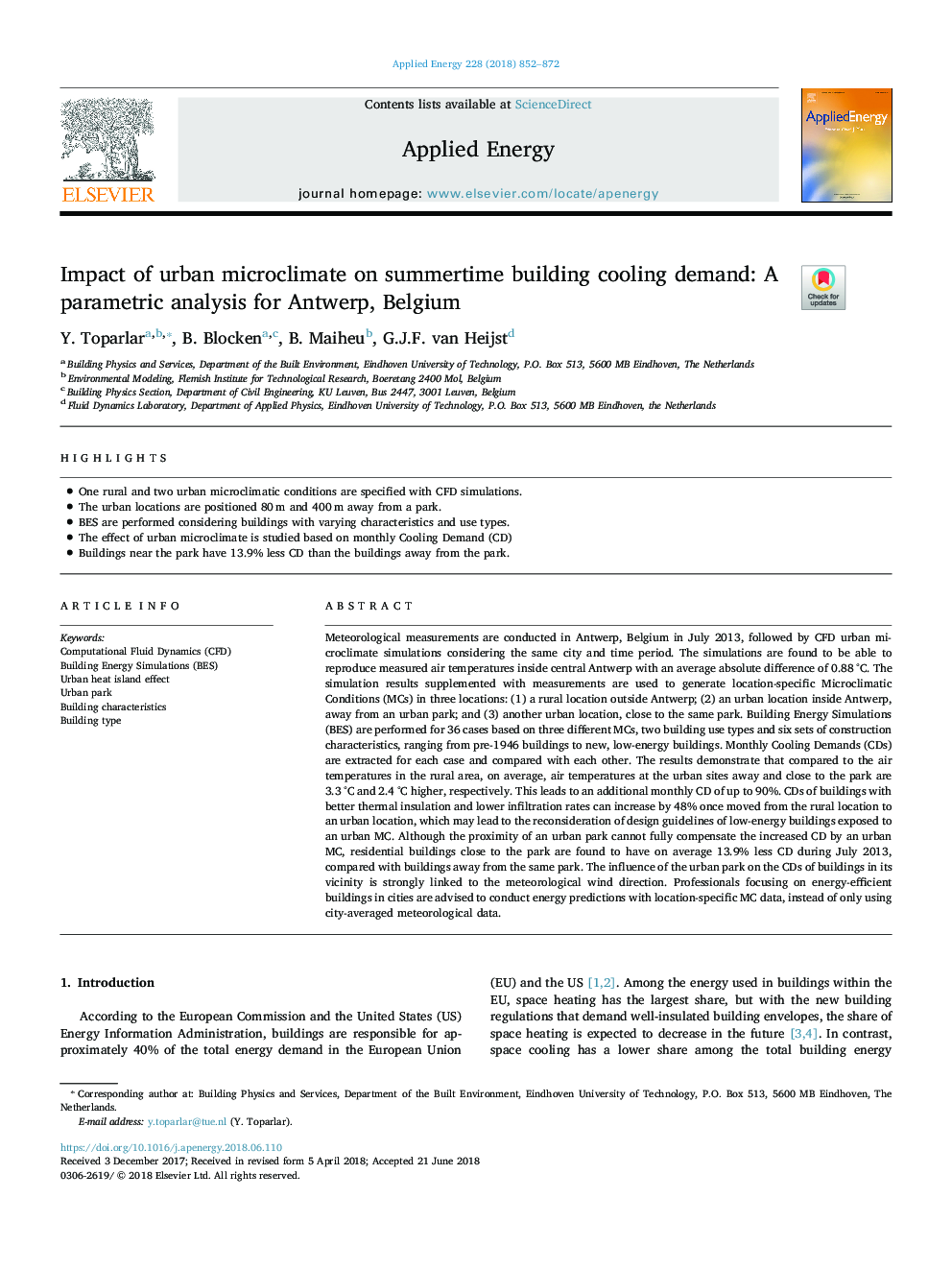| کد مقاله | کد نشریه | سال انتشار | مقاله انگلیسی | نسخه تمام متن |
|---|---|---|---|---|
| 6679770 | 1428063 | 2018 | 21 صفحه PDF | دانلود رایگان |
عنوان انگلیسی مقاله ISI
Impact of urban microclimate on summertime building cooling demand: A parametric analysis for Antwerp, Belgium
ترجمه فارسی عنوان
تأثیر میکروبی محیط شهری در تقاضای خنک کننده در فصل تابستان: یک تحلیل پارامتری برای آنتورپ، بلژیک
دانلود مقاله + سفارش ترجمه
دانلود مقاله ISI انگلیسی
رایگان برای ایرانیان
کلمات کلیدی
موضوعات مرتبط
مهندسی و علوم پایه
مهندسی انرژی
مهندسی انرژی و فناوری های برق
چکیده انگلیسی
Meteorological measurements are conducted in Antwerp, Belgium in July 2013, followed by CFD urban microclimate simulations considering the same city and time period. The simulations are found to be able to reproduce measured air temperatures inside central Antwerp with an average absolute difference of 0.88â¯Â°C. The simulation results supplemented with measurements are used to generate location-specific Microclimatic Conditions (MCs) in three locations: (1) a rural location outside Antwerp; (2) an urban location inside Antwerp, away from an urban park; and (3) another urban location, close to the same park. Building Energy Simulations (BES) are performed for 36 cases based on three different MCs, two building use types and six sets of construction characteristics, ranging from pre-1946 buildings to new, low-energy buildings. Monthly Cooling Demands (CDs) are extracted for each case and compared with each other. The results demonstrate that compared to the air temperatures in the rural area, on average, air temperatures at the urban sites away and close to the park are 3.3â¯Â°C and 2.4â¯Â°C higher, respectively. This leads to an additional monthly CD of up to 90%. CDs of buildings with better thermal insulation and lower infiltration rates can increase by 48% once moved from the rural location to an urban location, which may lead to the reconsideration of design guidelines of low-energy buildings exposed to an urban MC. Although the proximity of an urban park cannot fully compensate the increased CD by an urban MC, residential buildings close to the park are found to have on average 13.9% less CD during July 2013, compared with buildings away from the same park. The influence of the urban park on the CDs of buildings in its vicinity is strongly linked to the meteorological wind direction. Professionals focusing on energy-efficient buildings in cities are advised to conduct energy predictions with location-specific MC data, instead of only using city-averaged meteorological data.
ناشر
Database: Elsevier - ScienceDirect (ساینس دایرکت)
Journal: Applied Energy - Volume 228, 15 October 2018, Pages 852-872
Journal: Applied Energy - Volume 228, 15 October 2018, Pages 852-872
نویسندگان
Y. Toparlar, B. Blocken, B. Maiheu, G.J.F. van Heijst,
